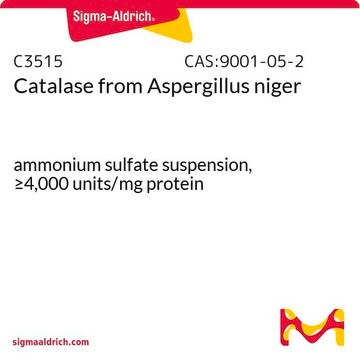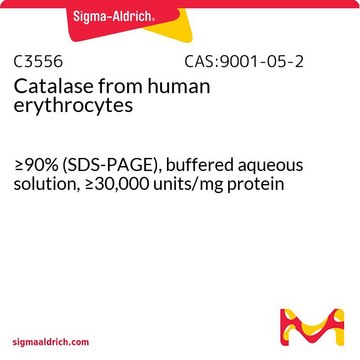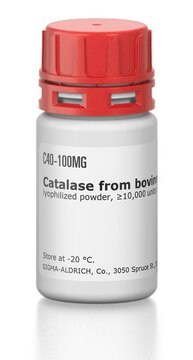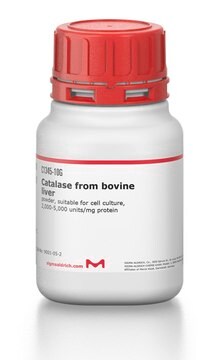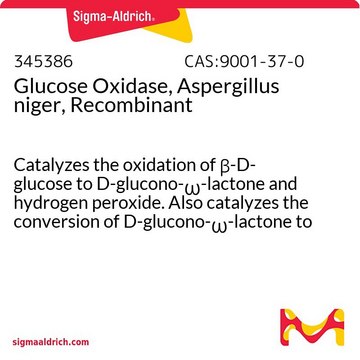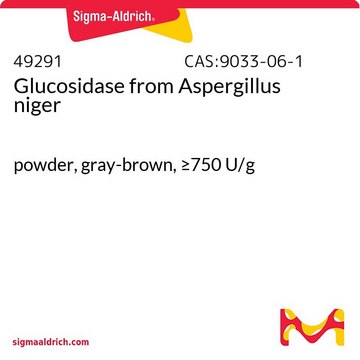219261
Catalase, Aspergillus niger
Catalase, Aspergillus niger, CAS 9001-05-2, is a native, long-acting, extremely stable form of catalase that is active over a wide pH range (pH 1 - 12).
Synonym(s):
Catalase, Aspergillus niger
About This Item
Recommended Products
Quality Level
description
Merck USA index - 14, 1900
form
lyophilized powder
specific activity
≥10,000 units/mg protein
≥4000 units/mg dry wt.
manufacturer/tradename
Calbiochem®
storage condition
OK to freeze
desiccated (hygroscopic)
color
green
solubility
H2O: 1 mg/mL
shipped in
wet ice
storage temp.
−20°C
SMILES string
O(CC)C(=O)c1ccc(cc1)O
InChI
1S/C9H10O3/c1-2-12-9(11)7-3-5-8(10)6-4-7/h3-6,10H,2H2,1H3
InChI key
NUVBSKCKDOMJSU-UHFFFAOYSA-N
General description
Catalase, Aspergillus niger, is a native, long-acting, extremely stable form of catalase that is active over a wide pH range (pH 1 - 12). Composed of four protein subunits, each containing a heme group bound to its active site, it is one of the most important antioxidant enzymes present in almost all aerobic organisms.
Application
- Industrial applications for eliminating hydrogen peroxide, which is utilized as an oxidizing, bleaching, or sterilizing agent.
- Food industry and egg processing, often in conjunction with other enzymes.
- Food preservation methods in combination with glucose oxidase, where superoxide dismutase produces H2O2, which is subsequently eliminated by catalase.
- Preservation process, along with glucose oxidase.
Biochem/physiol Actions
Warning
Unit Definition
Reconstitution
Other Notes
Legal Information
Signal Word
Danger
Hazard Statements
Precautionary Statements
Hazard Classifications
Resp. Sens. 1
Storage Class Code
11 - Combustible Solids
WGK
WGK 1
Flash Point(F)
Not applicable
Flash Point(C)
Not applicable
Certificates of Analysis (COA)
Search for Certificates of Analysis (COA) by entering the products Lot/Batch Number. Lot and Batch Numbers can be found on a product’s label following the words ‘Lot’ or ‘Batch’.
Already Own This Product?
Find documentation for the products that you have recently purchased in the Document Library.
Customers Also Viewed
Our team of scientists has experience in all areas of research including Life Science, Material Science, Chemical Synthesis, Chromatography, Analytical and many others.
Contact Technical Service